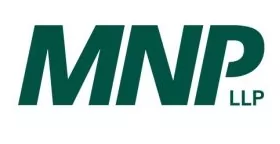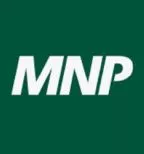The concept of Lean has been applied in various organizational settings: service delivery processes, manufacturing, business start-ups and most recently, innovation management.
This last setting, innovation management, is not a new business concept; Peter F. Drucker wrote a classic article on the discipline of innovation almost thirty years ago (republished in Harvard Business Review in 1998).
But the application of Lean to innovation management is fairly recent, responding to the fact that few organizations today have enough time and resources to invest in rigorous development and testing of new products and services. Lean innovation management helps to answer the question that MNP clients face every day: How can we innovate and grow quickly at a lower cost and with fewer resources?
Building a Lean innovative organization
To relentlessly control costs while achieving the imperative of growth, MNP's systematic Lean Innovation Discipline approach focuses on four key ways companies can build Lean innovative organizations on a sustainable basis:
- Promote a culture that encourages the open mindset required to question the current state of your business and the products and services you offer. Place 'disrupting' minds and people in each area of your business.
- Create a business model that aligns all aspects of your organization (processes, people, strategy, technology and organization) with your customers' needs and continuously eliminates waste and unnecessary work. Answer the following questions: Are we doing the right things and are we doing things right?
- Deliver innovation more quickly by developing the ability to work with people inside and outside company borders using a defined set of processes.
- Listen to customers' ideas, suggestions and pain points. Value-creation opportunities migrate as a market becomes more refined or fragmented and as customer needs change and become more elusive. To be successful in this volatile environment, businesses must adopt a customer-centric mindset, relinquishing outdated ideas and instead observing and evaluating actual customer behaviour and feedback in new and inventive ways. Dedicate resources for key product or service families who can cross organizational boundaries all along the value chain—from idea generation to the commercialization of new products and services—to respond to the voice of the customer.
Being Lean means being selective
Companies must define the most effective innovation strategy by deciding how to place their bets:
- Select breakthrough, replacement or responsive innovation to disrupt current players and delight your customers.
- Make changes that are essential to the product, customer experience, processes and business models by being Lean, not mean. Don't overshoot your products and / or services. Simplicity is best.
- Choose when to rely on the existing cultural configuration and resources and when to introduce new cultural dimensions.
Never be satisfied
The lifespan of any marketing, organizational, production or sales system is necessarily limited. To survive, thrive and innovate, businesses must be able to determine how well these systems are performing and how they compare to the performance standard. They must understand when the limits of a particular system will be reached in order to plan for discontinuities / disruption and come up with new products and services while using the Lean methodology and tools to grow.
With today's fast-moving business pace, there is no time to develop long and tedious plans and perform exhaustive market analysis to support innovation. Adopting a Lean innovation approach will put you in close touch with your customers and quickly impact your bottom line.
The content of this article is intended to provide a general guide to the subject matter. Specialist advice should be sought about your specific circumstances.

